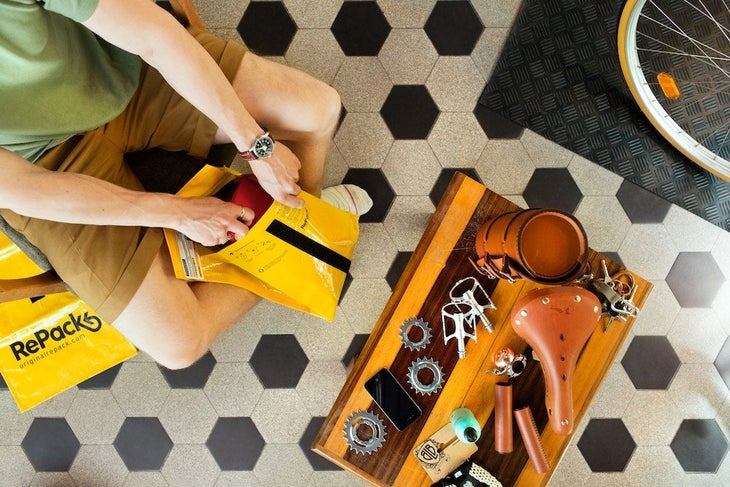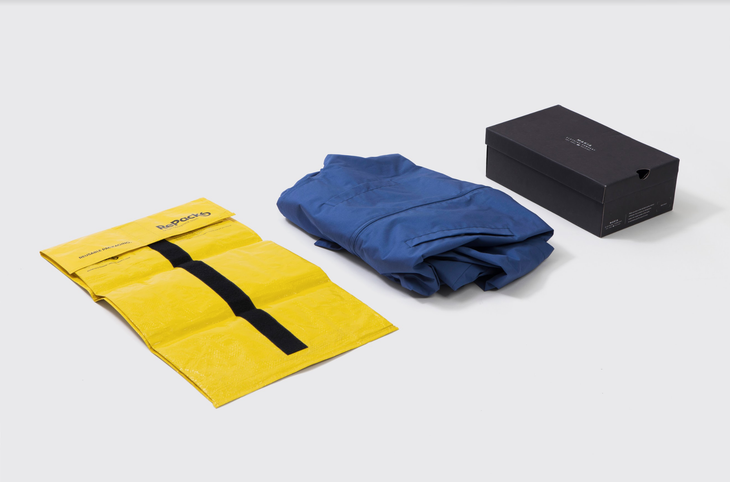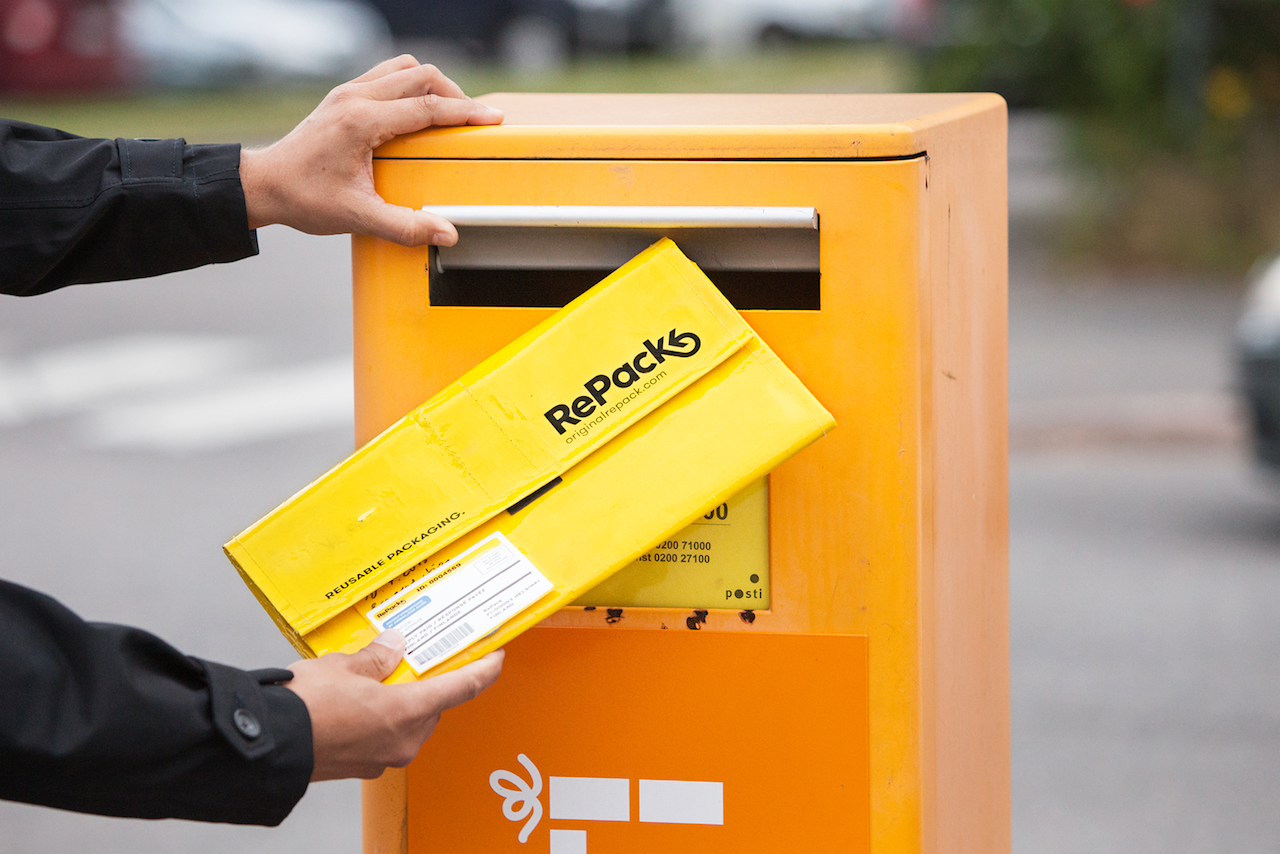The guilt of e-commerce is real. On Cyber Monday this year, U.S. shoppers spent a record $10.8 billion in less than 24 hours, generating an incredible amount of packaging waste in the process. For outdoor industry consumers—people who care about the environment and sustainability—reckoning with that kind of excess hits close to home.
“I cringe when I throw something away these days,” said Mitch Barlas, president of RePack North America, a returnable and reusable packaging company. “I know that when we throw things away they don’t just disappear—there’s a cost involved.”
RePack, the brainchild of Juha Mäkelä, was founded in Finland in 2011 in order to alleviate the waste generated by online shopping. Finland is the world’s leading paper pulp producer, but Mäkelä knew paper wouldn’t be around forever. Inspired by Finland’s bottle return system, he envisioned RePack as a shipping alternative to single-use poly mailers and cardboard boxes. For half a decade, the company has successfully replaced both for more than 100 companies throughout the European Union.
Last January, RePack launched its reusable mailers in the United States, and shortly thereafter launched in Canada due to demand (there, the company is working in partnership with Canadian Post). Although RePack’s North American client roster remains small and primarily consists of fashion brands, all of its pilot runs have been successful.
“We’re finding that when someone receives their order in a reusable package, there’s this a-ha moment. They don’t have to make that trip out to the garbage can with all this packaging,” said Barlas. “For the end-user, there’s a connection with the reusable packaging that translates back to really strong brand loyalty and recognition that the brand cares about the environment.”

The Lifecycle of a RePack
Made from 100 percent recycled plastics, RePacks are woven polypropylene (think Ikea bags) that come in three sizes, all of which can be sealed to half or three-quarters of their maximum size depending on what’s being shipped. Companies that sign on with RePack are provided the reusable mailers and instructed on how to use them, a process that is similar to sealing a giant envelope with a strip of tape (which RePack provides). Although they’re ideal for softgoods large and small—clothing, boots, hiking backpacks—the mailers are water-resistant and can accommodate hardgoods like ski goggles and lanterns, too.
“Scandanavian Outdoor, one of our first RePack users in Europe, has been experimenting with shipping hardgoods rather than just softgoods and apparel,” said Barlas. “They use eco-friendly content protection within the envelopes.”
Substantial and durable, RePack packaging can be used anywhere from 20 to 50 times. Once they get to the end of their lifecycle, the worn-out packages are upcycled into reusable shopping bags. Companies can opt to pass on some or all of the cost, about $3.70 per use, to customers. Once a company fills an order, the end-user folds the packaging down into a small envelope, sticks on the included return label, and drops it off at any USPS location. The envelope is then sent to RePack’s warehouse in Salt Lake City, where it’s cleaned and distributed back to brands. Every time a RePack goes through the system, its carbon footprint shrinks.
“RePack reduces packaging trash from shipping by 96 percent,” said Barlas, adding that the company is developing a new sealing solution to replace tape in 2021. “Even considering the return trip to our warehouse, RePack lowers overall carbon emissions from shipping by up to 80 percent, depending on the type of single-use packaging you’re replacing.”
Getting on Board
All of RePack’s clients are united by a desire to reduce their impact, and many employ fair-trade practices or use low-impact materials as well. Getting listed on RePack’s online participant directory is one of the benefits of joining up.
“Our best clients right now are companies that are thinking deeply about the environment and taking concrete steps to mitigate climate change,” said Barlas, noting that most end-users share those beliefs and are excited about RePack, despite the additional cost. “We’re here to help them dive deeper into sustainability.”
In Europe, plenty of outdoor brands are using RePack, including Salomon, which is currently in the midst of a holiday test-run. Barlas sees the U.S. outdoor industry and its customer base as an ideal market for RePack. So far, however, no American outdoor companies have signed up.
“I’ve personally talked to Arc’teryx, The North Face, Mountain Hardwear, and a couple other smaller brands,” said Barlas. “But what happens—and we see this fairly often with large-scale brands—is that the idea is presented to the fulfillment team and they don’t want to be bothered. That’s what happened at The North Face. We got very far with the CEO of [TNF’s parent company] and then it gets to one of their fulfillment centers and the director said no way.”
Barlas remains optimistic that companies will come around, but he says it’s going to involve leaning on operations teams.
“RePack does require a slight change for fulfillment and operations but we’ve modeled it after a poly envelope so it’s not too deep a dive,” he said. “We’re also offering a lot of support and hand holding.”

2021 Forecasting for RePack
In January, RePack will launch with a high-volume luxury fashion retailer, the first test of its scalability in the U.S. Thanks to half a decade of successful operations in Europe and two strong manufacturing partners in Asia, the company remains optimistic that taking on larger clients, and thus higher volumes, won’t present a problem. RePack is also in talks with the USPS to negotiate a lower rate for reusables and is considering opening two more distribution centers stateside.
“Reusable packaging is new to everyone, including us, and we want to do it collaboratively,” said Barlas. “We want to help brands implement it, because the ultimate winner is our planet. That’s what’s at stake here.”


